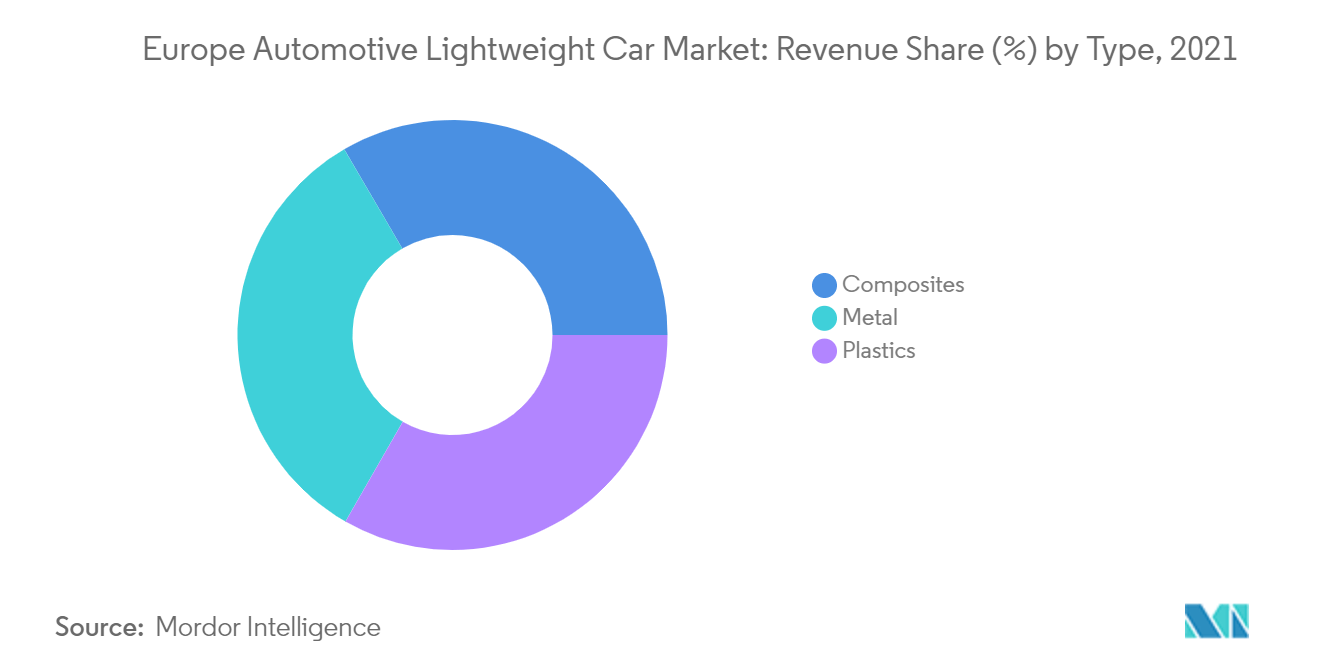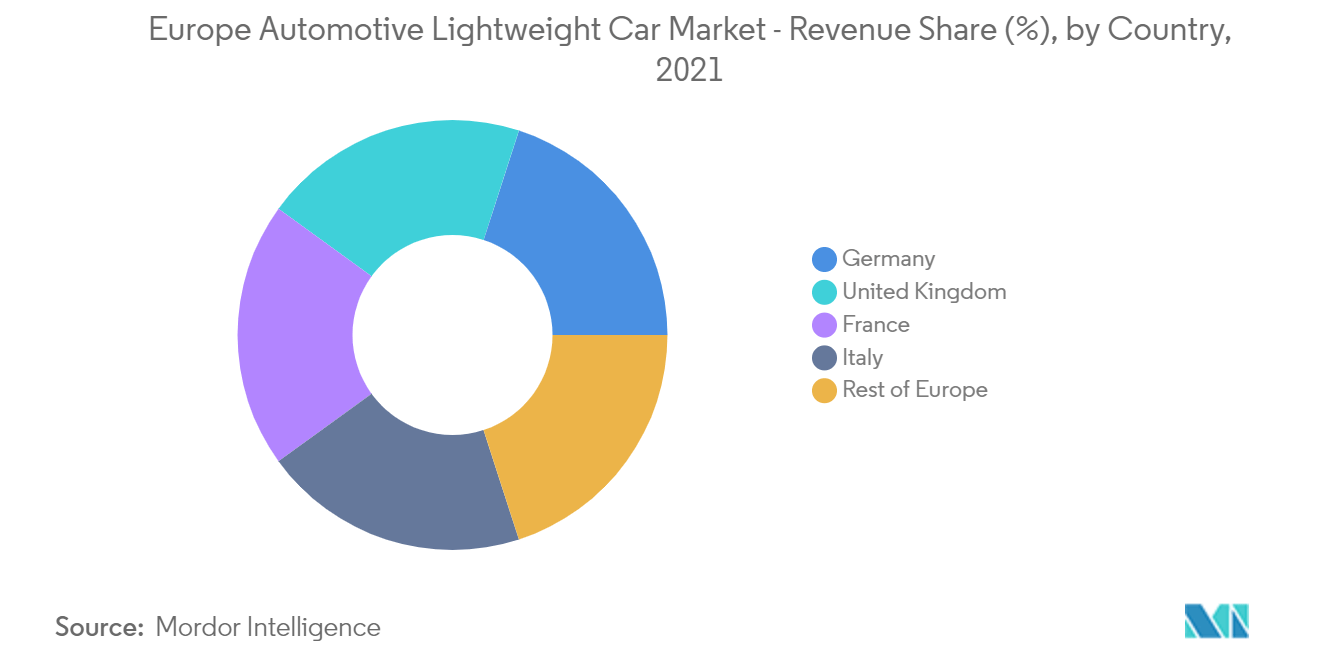Market Trends of Europe Automotive Lightweight Car Industry
This section covers the major market trends shaping the Europe Automotive Lightweight Car Market according to our research experts:
Continuous Evolution in Automotive AHSS Technology to Enhance Market Growth
There is a demand for reducing weight to enhance vehicle performance and safety. As a result, Advanced High Strength Steel (AHSS), an essential material for mass vehicle reduction, has become one of the fastest-growing materials in today's automotive industry. Steel makes up around 70 % of an average automobile's weight. Compared to standard steel, AHSS enables to reduce vehicle weight by 23-35% which is around 165 to 250 kg, for a regular passenger car, saving 3 - 4.5 tons of greenhouse gases over the vehicle's total life cycle. This saving in emissions is much more substantial than the CO2 emitted during the complete production of steel needed in a car.
The steel composition involves 34% of the body structure, panels, doors, and trunk closures, giving it energy absorption and high strength in case of a crash. 23% is the engine and machinable carbon steel for the wear-resistant gears. 12% is used in the suspension, using rolled high-strength steel, and the remainder in the wheels, tires, fuel tank, steering, and braking systems. In wake of such developments, some key companies operating are taking necessary initiatives in this regard to improve their presence in the market. For instance,
- In February 2022, Thyssenkrupp completed the sale of Acciai Speciali Terni (AST) including the associated sales organization in Germany, Italy, and Turkey to the Italian company Arvedi. The sale was contractually agreed in September 2021. Both parties have agreed not to disclose the financial details of the transaction. It has been agreed with the acquirer Arvedi that thyssenkrupp will retain shares in the amount of 15% in AST to strengthen the already existing operating cooperation with Arvedi through such a minority shareholding.
To produce higher strength for reduced steel section size and weight, automakers use less material, significantly reducing a vehicle's weight. The steel industry is focusing on developing different alloys for processing combinations, steel with high tensile strength and ductility, along with optimized chemical compositions to achieve multiphase microstructures of AHSS. Market players are developing new products to widen their consumer base. This is likely to intensify the competition in the global automotive lightweight materials market in the next few years.
Other advancements include the expanded capabilities of automotive steels that have high strength, which enable the design of thinner parts optimizing stiffness but maintaining geometries. AHSS such as Nano Steel helps deliver thinner gauges of steel and components to manufacture at room temperature. The aforementioned trends in the European market are anticipated to offer lucrative opportunities for players operating in the market during the forecast period.

Germany Expected to Lead the European lightweight Car Industry During the Forecast Period
The German segment of the market is expected to hold a significant share of the market during the forecast period. Germany is home to 41 automobile assembly and engine production plants with a capacity of more than one-third of European automobile production. Many German companies are experimenting with new composites that can reduce the vehicle's total weight to a great extent. The application of carbon-fiber-reinforced plastic (CFRP) has been widely adopted to produce automotive bodies, particularly in German-manufactured cars, such as BMW, Porsche, and Audi. For instance,
- In August 2022, Porsche revealed the new Porsche 911 GT3 RS with a 4.0-liter high-revving naturally aspirated engine with racing DNA and intelligent lightweight construction paired with a seven-speed Porsche Doppelkupplung (PDK) transmission. The 911 GT3 RS accelerates from zero to 100 km/h in 3.2 seconds and reaches a top speed of 296 km/h in the seventh gear.
According to several research reports, vehicle manufacturers are likely to increase lightweight component levels from 30 percent to 70 percent by 2030 to compensate for electric drive weight increases and more efficient engine technology in the coming years. With the market for lightweight vehicles in development, various initiatives within Germany are driving technological advancements. As per, the regulatory framework (Euro 6 norms), there is a growing motivation for a low-carbon economy by 2050.
- Research organizations such as the Affordable Lightweight Automobiles Alliance(AFLA) are specialized to deal with automotive light-weighting, which is co-funded by the European Commission's Horizon 2020 and EUCAR, the European Council for Automotive R&D.
Besides these, European carmakers such as Daimler, Volkswagen, Fiat-Chrysler Research Centre, Volvo, Opel, and Toyota are also working together to produce more efficient vehicles. Their goal is to reduce energy consumption by 10% and global warming potential (GWP) by 6% by reducing the vehicle's weight by 31 to 33% while maintaining the cost. Such trends in the Market are expected to enhance the overall growth of the Germany segment of the market during the forecast period.

